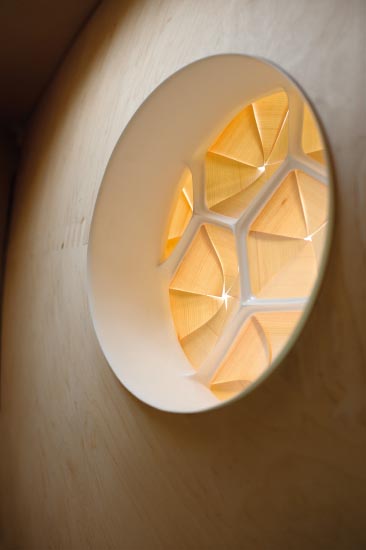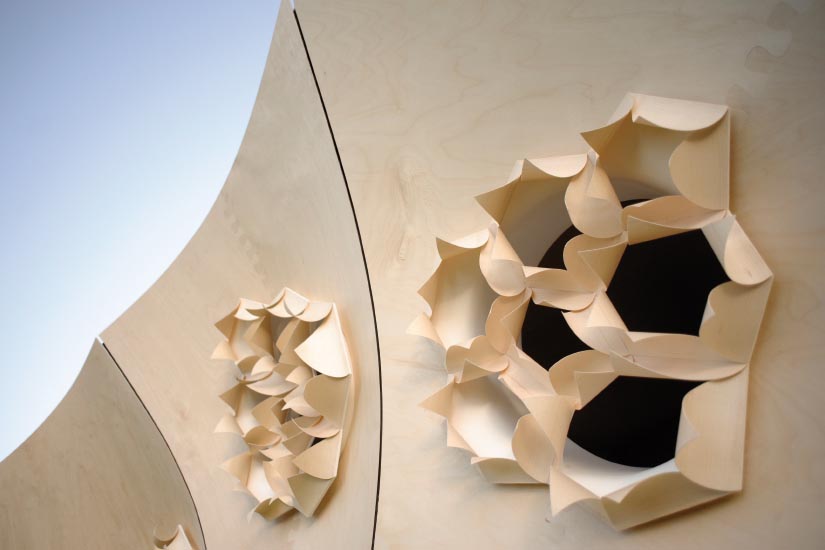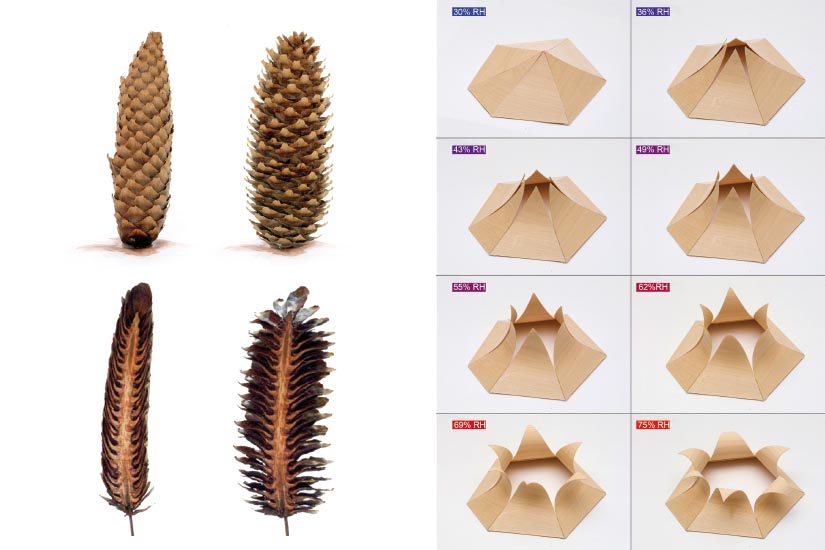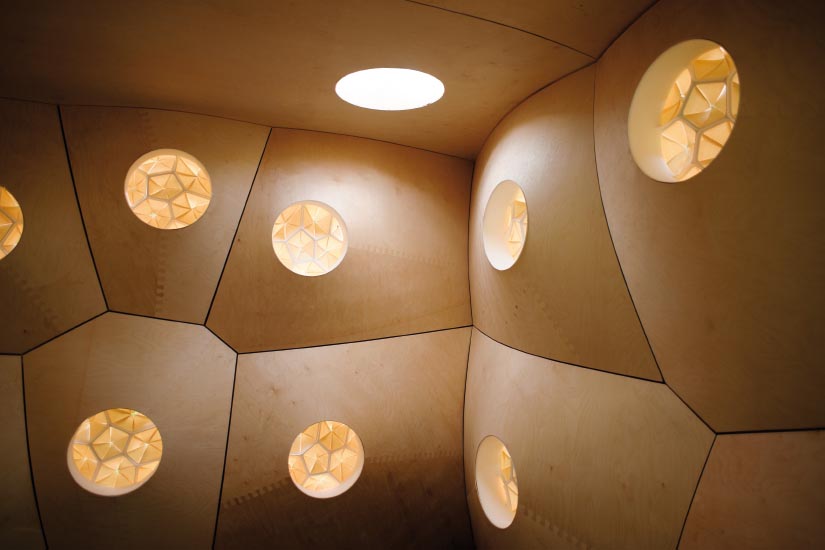Hygroskin
Architect Achim Menges takes inspiration from natural materials to create a structure that changes form depending on the climate


Architects and designers have begun to explore how our built environment can morph from a series of stagnant spaces to responsive zones that interact both with internal and external stimuli. Many examples of this make use of sensors and other advances in technology to detect stimuli, such as the Minimaforms Petting Zoo. Achim Menges, a professor at the Institute for Computational Design, University of Stuttgart, takes a different approach, by having the material itself be the machine.
Menges was inspired by nature's no-tech strategy – such as pine cones that close up in damp conditions and spread their scales when the air becomes drier – to create a climate-responsive structure that moves autonomously as the humidity changes. The wood-composite skin silently peals outwards letting light and air in, or curls back down sealing the space as the humidity varies – like a sort of large scale hygrometer (a gas humidity measurement device). This subtle yet constant interaction with the climatic conditions creates a shelter that functions in harmony with the natural world, no electronics required.






Discussion